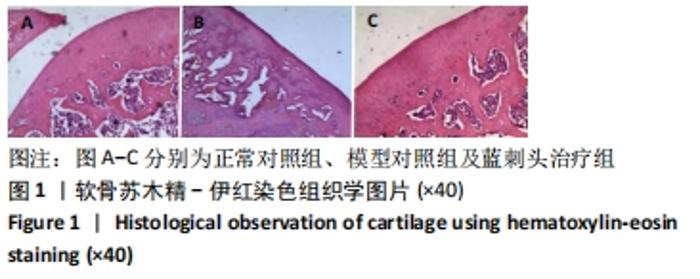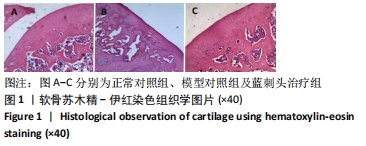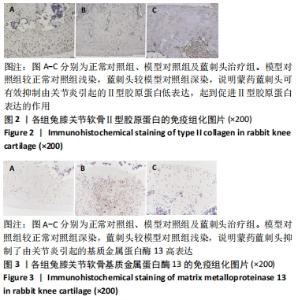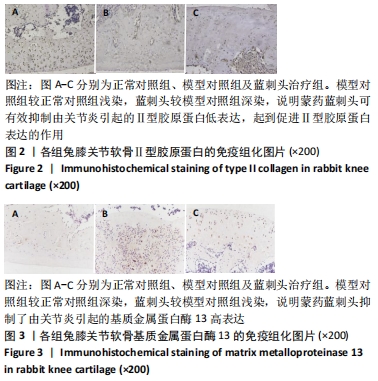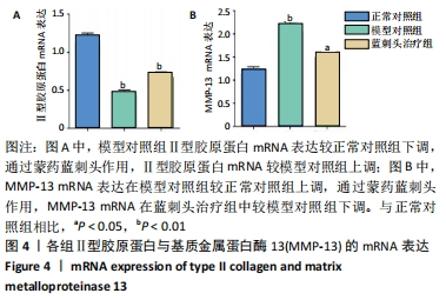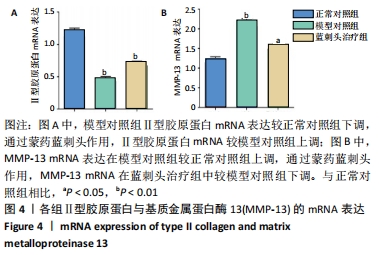[1] IANNONE F, LAPADULA G. The pathophysiology of osteoarthritis. Aging Clin Exp Res. 2003;15(5):364-372.
[2] MOLLOY MG, MOLLOY CB. Contact sport and osteoarthritis. Br J Sports Med. 2011;45(4):275-277.
[3] CORYELL PR, DIEKMAN BO, LOESER RF. Mechanisms and therapeutic implications of cellular senescence in osteoarthritis. Nat Rev Rheumatol. 2021;17(1):47-57.
[4] CHARLIER E, DEROYER C, CIREGIA F, et al. Chondrocyte dedifferentiation and osteoarthritis (OA). Biochem Pharmacol. 2019;65:49-65.
[5] MESSINA OD, VIDAL WILMAN M, VIDAL NEIRA LF. Nutrition, osteoarthritis and cartilage metabolism. Aging Clin Exp Res. 2019;31(6): 807-813.
[6] ATTUR MG, PATEL IR, PATEL RN, et al. Autocrine production of IL-1 beta by human osteoarthritis-affected cartilage and differential regulation of endogenous nitric oxide, IL-6, prostaglandin E2, and IL-8. Proc Assoc Am Physicians.1998; 110(1):65-72.
[7] ZHENG L, ZHANG Z, SHENG P, et al. The role of metabolism in chondrocyte dysfunction and the progression of osteoarthritis. Ageing Res Rev. 2021;66:101249.
[8] HENROTIN Y, ADDISON S, KRAUS V, et al. Type II collagen markers in osteoarthritis: what do they indicate? Current Opinion in Rheumatology. 2007;19(5):444-450.
[9] VINCENTI M, BRINCKERHOFF C. Transcriptional regulation of collagenase (MMP- 1, MMP-13) genes in arthritis: integration of complex signaling pathways for the recruitment of gene-specific transcription factors. Arthritis Res. 2002;4(3):157-164.
[10] SHIOMI T, LEMAÎTRE V, D’ARMIENTO J, et al. Matrix metalloproteinases, a disintegrin and metalloproteinases, and a disintegrin and metalloproteinases with thrombospondin motifs in non-neoplastic diseases. Pathol Int. 2010;60(7):477-496.
[11] GAO F, ZHANG S. Salicin inhibits AGE-induced degradation of type II collagen and aggrecan in human SW1353 chondrocytes: therapeutic potential in osteoarthritis. Artif Cells Nanomed Biotechnol. 2019; 47(1):1043-1049.
[12] 王宏伟,杨婷,董玉. 蓝刺头的研究进展[J].疾病监测与控制杂志, 2011,5(12):734-735.
[13] 巴音额古乐,金鸿宾. 蒙药蓝刺头对骨折愈合过程中BMP-2及VEGF表达影响[J].中国民族医药杂志,2017,6(6):53-55.
[14] 杨斌,萨茹丽,张月梅,等.蓝刺头多糖体外抗氧化及抗菌活性的研究[J].华北农学报,2016,31(4):233-238.
[15] 姜梦如,刘丹丹,朱浩,等.蓝刺头及蓝刺头复方水提物对实验性Ⅱ型糖尿病大鼠血糖及血脂的影响[J]. 中国兽医学报,2017, 37(5):15-17.
[16] WANG J, DONG X, MA F,et al. Metabolomics profiling reveals Echinops latifolius Tausch improves the trabecular micro-architecture of ovariectomized rats mainly via intervening amino acids and glycerophospholipids metabolism. J Ethnopharmacol. 2020;260: 113018.
[17] 刘岩,鞠亚波,常虹.蒙药蓝刺头对去卵巢模鼠骨钙素影响的实验研究[J].内蒙古医科大学学报,2014,36(s1):7-11.
[18] LIU Y, WANG X, CHANG H, et al. Mongolian Medicine echinops prevented postmenopausal osteoporosis and induced ER/AKT/ERK pathway in BMSCs. Biosci Trends. 2018;12(3):275-281.
[19] 邬波,马旭,柳椰,等.膝关节骨关节炎患者软骨炎症因子表达与病变程度的相关性[J]. 中国组织工程研究,2020,24(2):78-83.
[20] BLOM AB, LENT P, LIBREGTS S, et al. Crucial role of macrophages in matrix metalloproteinase-mediated cartilage destruction during experimental osteoarthritis: involvement of matrix metalloproteinase 3. Arthritis Rheumatol. 2010;56(1):147-157.
[21] JI B, MA Y, WANG H, et al. Activation of the P38/CREB/MMP13 axis is associated with osteoarthritis. Drug Des Devel Ther. 2019;13:2195-2204.
[22] ZHANG W, ZHANG C, LUO C, et al. Design, cyclization, and optimization of MMP13-TIMP1 interaction-derived self-inhibitory peptides against chondrocyte senescence in osteoarthritis. Int J Biol Macromol. 2019; 121:921-929.
[23] ZHANG J, ZHANG W, SHI J, et al. Dlx2 overexpression enhanced accumulation of type II collagen and aggrecan by inhibiting MMP13 expression in mice chondrocytes. Biochem Biophys Res Commun. 2018; S0006291X18311215.
[24] SACITHARAN PK. Ageing and Osteoarthritis. Subcell Biochem. 2019;91: 123-159.
[25] DICKSON BM, ROELOFS AJ, ROCHFORD JJ, et al. The burden of metabolic syndrome on osteoarthritic joints. Arthritis Res Ther. 2019;21(1):289.
[26] VERZIJL N, DEGROOT J, ZAKEN CB, et al. Crosslinking by advanced glycation end products increases the stiffness of the collagen network in human articular cartilage: a possible mechanism through which age is a risk factor for osteoarthritis. Arthritis Rheuma. 2002;46(1):114-123.
[27] QU H, LI J, WU L, et al. Trichostatin A increases the TIMP-1/MMP ratio to protect against osteoarthritis in an animal model of thedisease. Mol Med Rep. 2016;14:2423-2430.
[28] HAO HQ, ZHANG JF, HE QQ, et al. Cartilage oligomeric matrix protein, C-terminal cross-linking telopeptide of type II collagen, and matrix metalloproteinase-3 as biomarkers for knee and hip osteoarthritis (OA) diagnosis: a systematic review and meta-analysis. Osteoarthritis Cartilage. 2019;27(5):726-736.
[29] DAI M, SUI B, XUE Y, et al. Cartilage repair in degenerative osteoarthritis mediated by squid type II collagen via immunomodulating activation of M2 macrophages, inhibiting apoptosis and hypertrophy of chondrocytes. Biomaterials. 2018;180:91-103.
[30] SUN K, LUO J, JING X, et al. Hyperoside ameliorates the progression of osteoarthritis: An in vitro and in vivo study. Phytomedicine. 2021;80: 153387.
[31] 廖建钊, 章晓云, 张璇. 骨性关节炎发生发展中的分子信号通路[J]. 中国组织工程研究,2020,24(21):3394-3400. |
